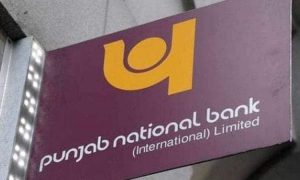The ongoing Covid-19 crisis has resulted in loss of income for many. In these challenging times, credit facilities can help people overcome their liquidity crunch. But while there are several loan products available in the market, the overdraft facility (OD) is often an overlooked option which could be highly useful and flexible in raising cash.
What is an OD?
A loan allows a borrower to get a lump-sum amount for a fixed tenure that is to be paid back with interest through equated monthly instalments (EMIs). The interest is charged on the entire amount disbursed to the borrower. For example, if you have a requirement of Rs 1 lakh in the first month, Rs 2 lakh in the second month and Rs 3 lakh in the third month and you apply for a loan of Rs 6 lakh, the lender will credit the entire loan of Rs 6 lakh in your account and start charging interest on the whole amount from the first day, irrespective of the amount you actually use.
An OD, on the other hand, is a credit facility that allows a bank account holder to withdraw the amount above the balance available in the account to the extent limit sanctioned by the bank. An OD is offered to the account holder based on collateral pledged with the bank, such as against fixed deposits, qualified securities, life insurance policies, property, as a top-up loan on an existing home loan, and so on.
The benefit of having an OD is that it allows you the facility to withdraw money up to the limit allowed in your account and interest is charged only on the amount that you have withdrawn. If you have funds available, you can deposit the amount back to your OD amount to save the interest and again withdraw the fund when required later on.
So, you can regularly withdraw and deposit money in the OD account. The interest is charged only on the amount you have utilised, and it is calculated on a daily basis.For example, suppose you have an OD account with a limit of Rs 1 lakh. If you withdraw Rs 20,000, your remaining withdrawal limit would be Rs 80,000. Now you deposit Rs 20,000 (plus interest amount) after 10 days, so the interest will be charged on Rs 20,000 for 10 days only. And your withdrawal limit will again increase to Rs 1 lakh.
OD option
You should select the OD facility based on the size of the fund required, interest applicable on it, and tenure for which you need the fund. Suppose you have an existing FD with the bank, and you have a liquidity crunch. In that case, you can get an OD against your FD at an interest of 1-2% above the interest you earn on your FD. You can also apply for OD against FD through online banking and mobile banking.
Now suppose you have an existing home loan with a bank for which you have already repaid a substantial portion, and your fund requirement is big. In that case, you can apply for a top-up loan with an OD facility. Remember, the interest on a top-up home loan with OD facility is usually higher than a top-up term loan. For example, a leading public sector bank is currently charging 7.70% floating interest rate for home top-up term loans between `20 lakh and `1 crore and 8.40% for top-up overdraft. However, you can get a top-up with the OD facility for a longer period in comparison to other OD products. So, instead of having many small loans at higher interest rates, you can apply for a bigger OD facility to consolidate all the loans.





































